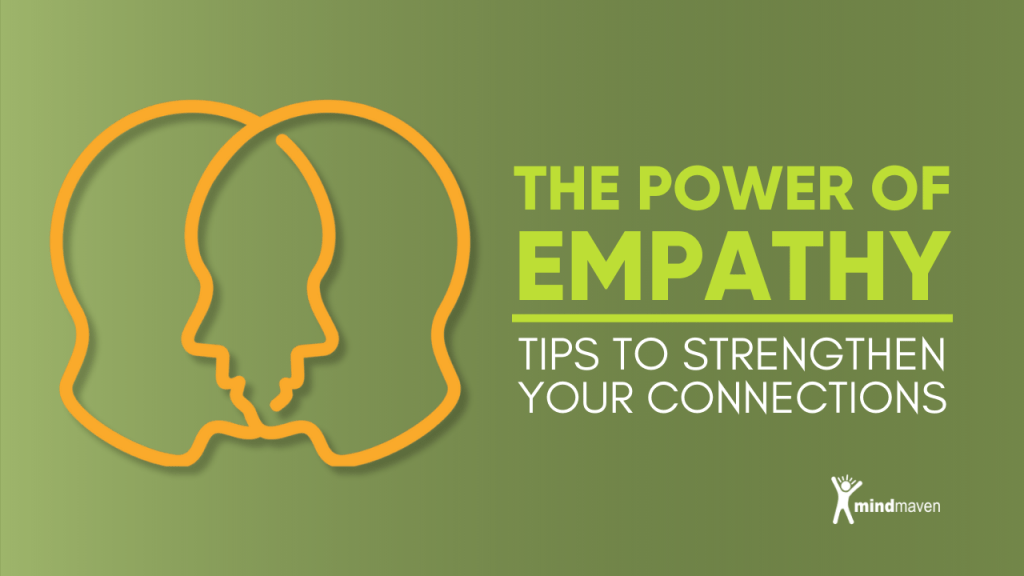“People will forget what you said, people will forget what you did, but people will never forget how you made them feel.” ― Maya Angelou
Imagine your Executive Assistant (EA) abruptly hands in their two-week resignation following an unexpected personal emergency. Besides being completely blindsided by the news (and worried about how you will cope without them), you’re devastated to lose such a valuable team member.
Upon hearing the news, two friends of yours reach out:
Friend 1:
Hey, I just heard about Rob quitting. I’m so sorry to hear that. Hope you find someone new soon!
Best,
John
Friend 2:
Hey, I just heard about Rob’s sudden departure. I can imagine you’re still in shock, so I wanted to reach out.
As a founder myself, I understand what a blow this is. At times, finding the right people for my team has been an agonizing process – between candidates without the right skills, those who don’t fit in with the culture, and those who are snapped up by more established companies with better benefits or higher pay – the talent pool can feel quite limited. When I have lost those right people from my team and had to start all over again, it has been devastating.
I just wanted you to know you’re not alone and you’ll get through this.
As a side note: Mindmaven helped me find my EA, and she’s been a game-changer. They have a great recruiting team and take the work out of finding and training an EA – also a lifesaver. If that’s at all interesting, I recommend checking out this blog post: How to Reach Your Fullest Potential as a Leader by Turning Your EA into a Rockstar.
Best,
Annika
Forgiving our shameless plug, which of these examples of empathy would make you feel more seen or understood? I feel safe betting it’s example #2 … And that’s the power of empathy in communication. Why is empathy in communication important? Read on to find out.
Harnessing the Power of Empathy in Communication
We believe that the ability to cultivate strong, lasting relationships that celebrates the accomplishments of others while also supporting them in their time of need is one of the most critical skills leaders can develop.
Empathy is a powerful skill that allows us to connect with others – to feel what they are feeling and to understand their experiences. Empathy in communication can help build relationships by showing we genuinely care about others as people rather than as opportunities.
The Difference Between Empathy and Sympathy
Empathy is the ability to understand and experience the feelings of another. It’s about putting yourself in someone else’s shoes and understanding how they are feeling.
Sympathy, on the other hand, is about feeling sorry for someone else’s circumstances. It’s an emotional response to another person’s misfortune. Sympathy is feeling for someone rather than feeling with them. While sympathy can certainly be genuine, it also often feels disconnected.
Many people think of the concepts of showing sympathy and empathy in communication as one and the same, but there are crucial differences between empathy and sympathy. While sympathy is relegated to negative experiences, we can empathize with others over both uplifting and discouraging circumstances:
- For positive experiences, we can feel empathy for another person’s success. We can understand and share in their joy and celebrate their accomplishments with them, ultimately ensuring they feel supported.
- For negative experiences, we can feel empathy for another person’s loss. We can understand and relate to their pain, ultimately ensuring they don’t feel so alone.
Many people have no problem expressing sympathy (which usually equates to saying, “I’m so sorry for what you’re going through.”) but may struggle with empathy in communication (which includes relating to the circumstances they’re experiencing.)
Empathy Examples: The Man in the Pit
One of my favorite scenes from the show The West Wing perfectly sums up genuine empathy. It’s a really compelling story that showcases the difference between being on the outside looking in and being right there with someone emotionally:
This guy’s walking down a street when he falls in a hole. The walls are so steep he can’t get out.
A doctor passes by, and the guy shouts up, “Hey you, can you help me out?” The doctor writes a prescription, throws it down in the hole, and moves on.
Then a priest comes along, and the guy shouts up, “Father, I’m down in this hole, can you help me out?” The priest writes out a prayer, throws it down in the hole, and moves on.
Then a friend walks by. “Hey Joe, it’s me, can you help me out?” And the friend jumps in the hole. Our guy says, “Are you stupid? Now we’re both down here.” The friend says, “Yeah, but I’ve been down here before, and I know the way out.”
The takeaway: Empathy is the person who jumped down into the hole with the one who was trapped, not necessarily to lead them out… but just to say, “You’re not alone.”
You Don’t Have To Have Experienced Exactly What Someone Is Going Through To Practice Empathy in Communication
Above, I shared that showing empathy in communication is the skill of relating to another’s circumstances. A common misconception is that you must have experienced precisely what someone else is going through to empathize appropriately.
That simply isn’t true.
While closely-shared experiences can certainly deepen the level of empathy you feel, they aren’t necessary.
If someone has lost a parent, lost their business, or lost their job, and you have never experienced those losses, that doesn’t mean that you can’t have empathy for them. At the end of the day, each of those is an experience of painful loss—all you have to do is ask yourself, “What’s a time I experienced a painful loss?”
Maybe your losses have not been as extreme as theirs; they don’t need to be. You can be upfront about that by saying something like:
“I know this isn’t exactly what you’re going through, but I remember losing my grandfather. We were incredibly close when I was growing up, and I remember feeling this sense of disorientation. I don’t know if that’s what you’re feeling now, but to some degree, I just want you to know I’m here if you want to talk.”
How To Show Empathy in Communication and the Traps To Avoid
Genuine empathy is a great way to stay in touch with those you care about and build meaningful relationships. That said, it doesn’t necessarily come naturally to everyone. Here’s how to build the skill (and habit) of empathy in communication.
Find Opportunities to Develop Empathy in Communication
How do you find opportunities to practice empathy? Naturally.
Throughout your day-to-day life, you’ll hear about things going on in the lives of those you care about, whether on your LinkedIn feed, a TechCrunch article, or a casual conversation. See these as opportunities to reach out and develop empathy in your connections.
Send Thoughtful, Genuine Emails and Avoid These 3 Traps
How do you channel genuine empathy in your outreaches? It’s not as hard as you might think. Simply avoid these three traps:
Trap #1: The “I Don’t Want To Bother Them” Trap
It can be difficult to reach out to people after a job loss or layoff – or even more devastatingly, the loss of a loved one.
- The person suffering the loss may feel like they are imposing on others or that they are a burden.
- The person thinking of reaching out to them may feel the same; that they are imposing or creating more grief by bringing up the loss and forcing the person to think about their situation.
However, it is essential to be aware that the connections we make with others can be one of our greatest sources of strength during difficult times. The most important thing to remember is that although saying something is almost always better than nothing, you want to avoid these two common traps.
Trap #2: The “Sorry for Your Loss” Trap
This trap is very timely as we are entering a recession in which job loss, layoffs, and even company closures are already prevalent.
It can be easy to fall into the trap of sending well-intentioned but meaningless platitudes like “sorry for your loss,” “sending thoughts and prayers,” or “thinking of you” when reaching out to someone who has experienced loss, whether minor or extreme. You have probably experienced something similar before:

Trap #3: The “Congrats” Trap
When it comes to good news, it is also easy to fall into the trap of delivering flat interactions that don’t say anything beyond “congrats.” You probably know the type:

These last two traps are cliché, bland, and ultimately forgettable. Sure, any interaction is usually better than no interaction. But unless you want to become the bottom-feeder of relationship management (like those who give everyone the same generic gift card year after year during gift-giving rush hour, i.e., holidays and birthdays), you need to invest a little more time and thought into your interactions. That is how you define empathy.
Instead of falling into the “Congrats” or “Sorry for your loss” traps, let’s look at how to turn the communication above into meaningful and empathetic interactions. Depending on the situation, you can do this by focusing on one of three things: Joy for the success of others, genuine cheerleading, or compassion.
3 Simple Tips To Send Empathetic Emails That Strengthen Connections
Okay, so if you aren’t supposed to fall into the traps above … What do you do? Here are three ways you can practice empathy in communication – in particular, through your email outreaches.
Tip #1: Joy for the Success of Others
Joy for the success of others is one of the most rewarding emotions you can create in yourself. When someone is doing well or experiences an event worth celebrating, celebrate along with them.
Although your natural inclination might be to feel jealous of their success or life event, train your mind to set this aside and instead bring out genuine excitement and happiness for their accomplishment. If you succeed in this, trust me: It feels awesome.
Here’s a recent news story featuring Sam Chason and Matt Gronberg, co-founders of Storage Scholars, after their Shark Tank appearance.

If I were to write emails to Sam and Matt, one would look something like this:
Hi Sam,
I just read the news about your Shark Tank appearance and the resulting success of Storage Scholars:
How awesome is that? You and Matt had a brilliant idea and ran with it!
Startups are always a gamble, and the added layer of a TV appearance would have compounded my stress, but you two succeeded where so many others have failed. That is truly commendable. Looking forward to watching your business scale.
Cheers,
Patrick
Written correctly, these types of emails deliver a feeling of genuine care that goes way beyond the simple “Congrats” emails most people send. With just a little more effort, you can have a much more significant impact on the people in your network.
Tip #2: Genuine Cheerleading
There’s a big difference between genuine cheerleading and fake cheerleading. Fake cheerleading is what we’ve already discussed: The flat, impersonal “congrats” emails.
Genuine cheerleading is different. It means getting genuinely excited about something good done by someone you know. Note: this isn’t necessarily linked to a major accomplishment.
For example, after reading this story a few years back about Bart Lorang’s brilliant employee vacation policy:

My response looked something like this:

Genuine cheerleading emails make the other person feel appreciated and encourage them to continue doing more great things.
Tip #3: Compassionate Care
Not every communication you have will be due to something positive; sometimes, you’ll find out about layoffs, recalls, leaders caught in suspect activities, or even the loss of loved ones.
Most people shy away from negative or difficult interactions to avoid offending or upsetting the other person, and this aversion creates an opportunity for you to make a genuine impact.
Let me give you an example. A connection of mine lost his mother after a long battle with cancer. Upon hearing the news, I sent the following email:
As you can see, this email aims to accomplish two things:
- Delivering an empathetic response to his circumstances by sharing my own feelings in a time of loss.
- Displaying in no uncertain terms my continued support.
The trick to writing empathetic emails is simple: Care about the other person. Empathy is about putting yourself in another’s shoes and providing as much relevant value as possible.
Although you will not always receive a response (and should not necessarily expect one), just know that you have made an impact, however small, in that person’s life by reaching out with empathy. In this case, I did receive an appreciative response which proves that point:

The Golden Rule Applies To Empathy in Communication: You’re Writing To People, Not About Events
Sometimes the emails you write will fit clearly into the three examples above. Other times, you’ll need to combine them or perhaps tap into something else altogether.
Ultimately, it’s all about writing to the person rather than about the situation. Ask yourself, “How can I provide the most valuable interaction possible based on the information at hand?”
As long as you look at this from a relationship perspective rather than a transactional perspective, you’ll find the right approach. The more you send these emails, the better you get at writing them, and the more you’ll start hearing back from people. And as you begin to hear back from people, you’ll see just how much of an impact these emails make.
Often the responses you get will be relatively shallow or lightweight, but sometimes you’ll discover your email made a really powerfully positive effect on someone’s day.
At the very least, at the end of the day, the sum of all these experiences is that you feel good about yourself because of the positive difference you’re making in the lives of others.
Using Empathy in Communication Is a Skill
At first, it may feel unnatural to try to empathize with others, and you may feel uncomfortable reaching out to your network. Don’t worry – this is normal.
Showing empathy in communication is a skill, and like any skill, it can take some time and practice to get comfortable with it. But the more you use it, the more natural it will become. And the relationships you build and connections you form will be worth the effort.
Keep in mind that you’re investing in relationships, not transactions. Think of your contacts as people rather than opportunities, and you’ll find the right approach.
Remember, all we’re really suggesting is that you send a couple of additional emails to practice empathy in communication. If even that feels overwhelming and you feel like you don’t even have time to send an extra email or an extra couple of emails a week, then you may benefit from our concept of Whitespace Time.
Whitespace Time ensures that you have a minimum of four consecutive hours every single week for important proactive work, like investing in relationships. To learn more, check out our free time management guide: Whitespace Time Management: The Proactive Entrepreneur’s Guide to Owning Your Time and Mastering Your Priorities.
PS. We’ve discovered an incredible time-saving resource for building meaningful relationships called Ren. They describe themselves as “the intelligence tool that helps you connect with clients, prospects, and key contacts in a timely, contextual, and meaningful way.” Finding the right tools to nurture meaningful connections can be a game-changer – so it’s definitely one to check out! You can use our exclusive code when signing up at https://ren.co/signup/PATRIC-JFBW-DGJ1. Cheers!




